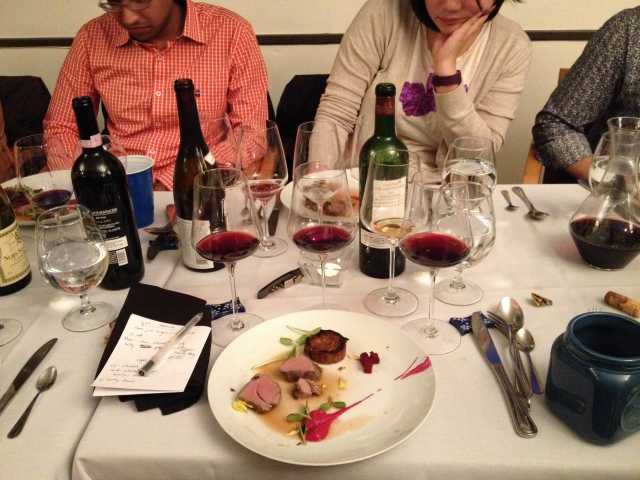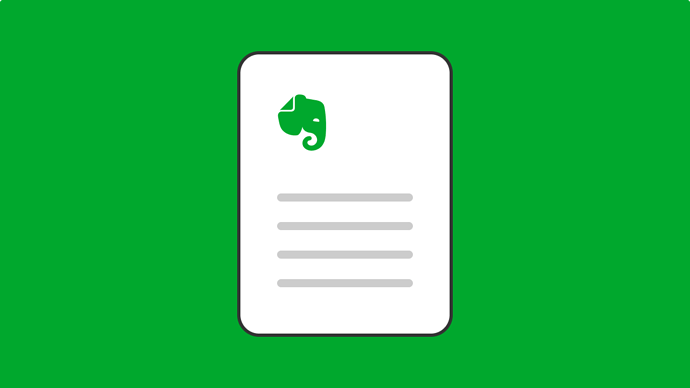
2001: A WINE ODYSSEY — BERSERKER OFFLINE @ THE PALACE - The Palace Steakhouse, SF (7/1/2015)
I enjoyed the Berserker company immensely, and it was a rare treat to be able to taste so many textbook examples of great wine styles. The Trimbach Freddy Emile and the Nairac were easily my favorite wines of the night, and for me, both paired excellently with every course.
The food was, as I’ve come to expect from The Palace, well executed, and modest in flavor and complexity, which is superb for a wine dinner. Highlights were a dulce de leche souffle and a perfectly done rare steak that followed the also-excellent lamb pictured above.
Whites (and a sticky)
-
2001 Trimbach Riesling Cuvée Frédéric Emile - France, Alsace
Summary:
The lesser sibling to Trimbach’s legendary Clos Ste Hune, Cuvee “Freddy" has a reputation as one of the purest varietal expressions in Alsace. The vineyards are the Grand Crus of Geisberg and Osterberg, right in Trimbach’s home town of Ribeauville. Marl-limestone-sandstone soil and steep southern exposure provide conventionally good conditions for great Riesling (unlike the full-limestone soil of Clos Ste Hune). Because the grapes are sourced from two different Grands Crus, Trimbach cannot label CFE as GC, even if they wanted to (which they don’t).
Rich and pleasantly brioche-y out of the bottle, with air this develops into seriously focused, pure, un-botrytized Alsace Riesling. Phenomenally high acidity with elegant varietal character.
Score: Around 9.
Visual:
Clear, day-bright. Light gold with reflections of yellow and straw. Moderate-plus concentration.
No gas or sediment. Diminished tears.
Nose:
Clean, moderate plus intensity nose.
Notes of baked green apple, with emphasis on “baked” - some brioche / autolytic notes (possible lees stirring?). Warm stone. Faint lime pith note.
As this opened up, some lemon (confected) and slight petrol/pool-toy (TDN) emerged. Notable (though not especially surprising) is the absence of any hints of botrytis in a Grand Cru bottling of such ripeness. This may be stylistic (the Osterberg and Geisberg GC vineyards are steep, with good winds that stave off rot). Also 2001 was cooler and more classical than the exceptional 2000 - perhaps it wasn’t a vintage conducive to botrytis.
Overall still youthful with some signs of development, especially towards the end of the evening (the brioche aromas blew off a bit, revealing more varietal character underneath).
This wine has some complexity already, but will develop even more with age.
Palate:
Dry (<3g RS, possibly bone dry), medium bodied with moderate alcohol ~12.5%? [yes—12.5%].
More baked apple yeastiness mid-palate, with some citrus tones and hints of warm stones.
No phenolic bitterness. Solidly high acid (very clean, balancing tart malic with strong tartaric character).
Phenomenally balanced in a classic dry riesling style.
The finish is moderately long, with balanced fruit, secondaries, and acidity all the way. (91 pts.)
This wine is so young, so primary, and so classic! I was surprised by the strength of the burnt match, but it seems (according to the interwebs) this is perfectly normal for young Prum Riesling - especially from the Sonnenuhr vineyard. Moderately sweet, light, and saffron-scented, with good varietal character and sparkling acidity.
Score: Between 8.5 and 9.
Visual:
Clear, day bright, medium-straw with moderate concentration. I’m a bit surprised this was lighter in color than the Cuvee Freddy - especially since this has botrytis on it, and that usually hastens oxidation and thus deepening of color.
Nose:
Light burnt match (reduction), which yields to a light (but present) tone of petrol/pool-toy (TDN). There is a slight hint of grapefruit pith (thiol character), and a moderate influence of botrytis (warm saffron and rice tones). Fruit wasn’t dominant for me.
Surprisingly youthful and moderately complex, with both varietal character and botrytis influence. The burnt match certainly evokes a sense of warm crushed stones (Terroir!). The fact that it seems to be a reductive character doesn’t change the magic of this combination. I’m becoming more and more convinced of the argument that minerality is in fact the combination of high acidy and moderated reduction.
I think this probably needs a lot of time — decades, perhaps — for the struck match aromas to subside and for secondary and tertiary aromas to develop.
Palate:
Off-dry (I wrote ~15g/L, but given the ripping high acid it could be in the 30’s or 40’s).
Low alcohol (not even diminished - I feel almost no alcoholic heat). ~10%? [actually 7.5%].
Solidly high acid, both malic and tartaric, though initially the acidic spark is softened by significant sweetness.
No phenolic bitterness.
Superb balance with sweetness lifted by strong acid.
Complexity is just moderate at this point - I think it needs significant age to develop further.
The finish is long, with sweetness and acidity neck-and-neck. (88 pts.)
-
2001 Château Nairac - France, Bordeaux, Sauternais, Barsac
Summary:
This is textbook Sauternes, though primary. Saffron and savory gasoline on the nose, with bright acidity to balance the sweetness on the palate. I can’t speak as to the potential for development (I’ll defer to Ashish’s opinion that this may not have the stuffing to be great in the tertiary stage). I found it paired well with pretty much every course, from the melon amuse to the steak.
Score: Between 8.5 and 9.
Visual:
Clear, day-bright, medium amber in the glass despite its relative youth (botrytis hastens the deepening of color). No gas or sediment, slightly elevated tears.
Nose:
Strong saffron-rice tones (botrytis) with slight fig (oxidation) and a savory gasoline tone (not TDN - actually gasoline). There’s also a faint meatiness reminiscent of Jamon Iberico. Primary. No apricot character and no apparent oak influence (despite being fermented in 50% new oak and spending 30 months in barrels of unspecified age).
Youthful and primary.
Palate:
Luscious (>45 g/L), with moderate alcohol (12.5%?)[actually: 13%] and solidly high acidity (very clean, tilting more towards tartaric than malic). For context this is 90% Semillon, with only a bit of Sauvignon Blanc and Muscadelle).
Balanced and primary, with a long, sweet finish. (88 pts.)
Reds
Score: Around 8.
Visual:
Clear, bright, medium-minus concentration red with some garnet at the rim. No gas or sediment, moderate viscosity.
Nose:
I’m struggling with this. The fruit is dark, pruney, slightly overripe. It’s also reductive with a heavy dose of barnyard. My gut feeling is I don’t really like this, but it’s certainly interesting.
Palate:
Medium body, slightly elevated / un-contained alcohol. It feels a bit hot (alcohol is 13.5%), with the same slightly distasteful mix of fruit and barnyard. There’s an additional slightly stemmy tone (possible stem inclusion). The acid is solidly high, with the diminished tannins one would expect from pinot.
It’s technically balanced, but for me it doesn’t have the flavor concentration to contain even the modest 13.5% alcohol it is sporting. (80 pts.)
Score: Around 8.5
Visual:
Clear, bright, medium-minus concentration ruby with no rim variation. No gas or sediment, moderate viscosity.
Nose:
Excellently ripe warm red cherry tone, with very slight reductive character and faint barnyard aromas. There’s a very light oak influence that I picked up after some time. Maybe 10-20% new oak.
Palate:
Medium bodied, with elevated alcohol (13.5? no - actually 14.6%, but holds it well). Savory, ripe red fruit, with a nice purity to it, as well as a slight burnt/reductive character. Acid is high, and tannins are diminished. (85 pts.)
-
2001 Château Cos d’Estournel - France, Bordeaux, Médoc, St. Estèphe
Summary:
Dirty and green, with a slightly overripe fruit quality I’m not a huge fan of. Structurally classic and undeniably complex. It blossomed with some air, which makes me think this will be much better with some more age.
Score: Around 8.5
Visual:
Nearly opaque, medium ruby with some hints of garnet.
Nose:
Expressive and a bit dirty. Initial notes of barnyard and underripe stewed bell pepper (pyrazines). Underneath there is tightly-wound ripe purple fruit, with a savory cedar/tobacco note. Over time the fruit blossomed into a somewhat bacterial ripe-to-overripe black cherry, with a fair whiff of Brettanomyces.
Complex and developing, but still very primary.
Palate:
Medium plus body, moderate alcohol (13.5%? - actually 13%).
The oak is more apparent on the palate, presenting as finely ground nutmeg with a touch of cinnamon character.
Moderate acidity, moderate tannins - definitely less then I’d expect from a relatively young top Bdx. (85 pts.)
-
2001 Paul Jaboulet Aîné Hermitage La Chapelle - France, Rhône, Northern Rhône, Hermitage
Summary:
Searing, painfully intense raw white pepper rotundone. Screaming high acid. Slight tones of cured meat emerged with air exposure. This needs more time.
Score: I can’t rate this - I couldn’t see past the rotundone.
Visual:
Clear, slightly dull (low lustre). Medium red, nearly opaque.
Nose:
Clean, elevated-intensity. Dominated by raw, saline white pepper. An insanely strong whiff of rotundone that I found physically painful. After a lot of time and air, some secondary tones emerged— lambic, floral, and Jamon Iberico. All the while I was struggling with the searing white pepper.
Palate:
Medium plus body, elevated alcohol [14%]. Savory and floral in the mouth, with tones of cured meat. Screaming high acid and solidly moderate tannins.
Youthful, primary, astringent. Needs more time.
Score: Between 8.5 and 9.
Visual:
Medium-plus ruby, moderate plus concentration.
Nose:
Clean, moderate intensity nose of bloody red fruit, savory tomato, a hint of barnyard, and secondaries of incense, anise, fennel, black liquorice, and mushroom. No evidence of oak.
Definitely showing signs of maturation, and some complexity.
Palate:
Medium body, moderate alcohol, savory red fruit with a mushroomy quality in the midpalate. Acid is just elevated, tannins are elevated. Delicious. (88 pts.)
Posted from CellarTracker

